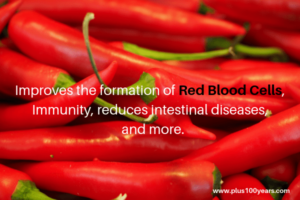Do you want Spicy?

Every time I order some Thai food, I get asked the question, “Do you want it spicy?” This always takes me a little while to decide if I want to go down this road or chicken out and go mild.
What I hadn’t realized until recently is that it’s not just a question of taste but also of health. There are many benefits to occasionally using chilies and consequences if you overdo things. Just ask Jason Rupp, who, at a recent eating contest, ingested 20 at one time and had some worrying side effects, but is okay now.

What chilies are used in Thai cooking?
Thai peppers are spicy chili peppers with a wide range of heat, and despite common belief, there is no single type of Thai pepper, with at least 79 separate varieties. Because of the wide variety, Thai peppers typically range from 50,000 to 100,000 Scoville Heat Units. Compare this to a typical jalapeno pepper, which ranges from 2,500 to 8,000 Scoville Heat Units, making the average Thai pepper about 15 times hotter than the average jalapeno.
The most common ones used are: Prik num or “banana peppers,” for example, resemble a New Mexican pepper; prik yuak (milder, sweet); prik chee fah (milder, green and red varieties); prik leuang (with milder heat, great for pickling); prik jinda (hot peppers); and prik kee noo (very hot, similar to bird’s eye chilies).
What are the health benefits?
Gain a boost to your immune system because chilies are a great source of vitamin C and A, which are important for immunity and helping you fight off infections. Being rich in antioxidants can help protect cells from damage.
Studies have shown that capsaicinoids – a group of naturally occurring chemicals in chili peppers – can help decrease your chances of getting heart disease by reducing inflammation, blood pressure, and bad cholesterol levels.
Not only does capsaicin help your heart, but it can also boost your metabolism, promoting weight loss and burning belly fat. Studies indicate that eating chilies with your food results in you eating less.
Recent studies suggest that capsaicin can act as a cancer preventive agent, reducing the risks of gastrointestinal cancers. More study is required to see if it helps kill cancer cells.
Effects on the Microbiome?
If you read last month’s health article on the Microbiome, you might be interested in the effects of spiciness on this. One hypothesis states that consuming capsaicin may enrich the gut microbiota in bacteria, while another suggests it can affect the growth of certain bacteria in the gut and change the diversity and abundance of different microbial species. However, over time, gut flora can develop a resistance to these molecules. I would advise then to gradually increase the amount you consume; like everything, it’s safer in moderation. But what if you’re not into moderation? This leads us onto
The Bad Effects of Eating Too many Chilies.
I know it can often be a macho thing to demonstrate how hot you can go and how many you can eat. But unless you’ve been eating these blighters for some time and have built up some resistance, here are some things to consider.
Capsaicin can irritate the digestive tract, leading to heartburn, acid reflux, stomach cramps, diarrhea, and even nausea and vomiting. If you already have stomach ulcers, you would probably realize that eating spicy isn’t a good idea. Combined with the recent hot weather, too many chilies can lead to overheating, leading to excessive sweating. The raised body temperature will also make it harder to fall asleep. Also, irritation to the mouth and eyes and other places can cause burning. So be very careful if handling chilies to not touch your eyes; chili in the eye is no joke. Your savior in these dire burnouts is good old dairy products, so down some milk or yogurt!
If you do overdo it, don’t![]() worry you will survive.
worry you will survive.
You might get worried that you’ve overdone it with the hot stuff and you start feeling terrible. But if you are in decent enough physical condition you will survive. I doubt if you will ever go as extreme as our friend Jason Rupp. who managed to eat over 100 chilies in one sitting during an eating completion. Check out his video on YouTube entitled Death Noodles! The Spiciest Food in Jakarta gone wrong! America vs. Indonesia Warung Abang Adek has over a million views on his channel. The dish they tried was called Indomie Pedas Mampus, which is about the spiciest you can eat in the world.
The worst effects were stomach pain, bad headache, high fever, chest pains, weakness
“I went over my limits and paid for it hard, I wondered if I would ever recover. But I did it took a month.”
